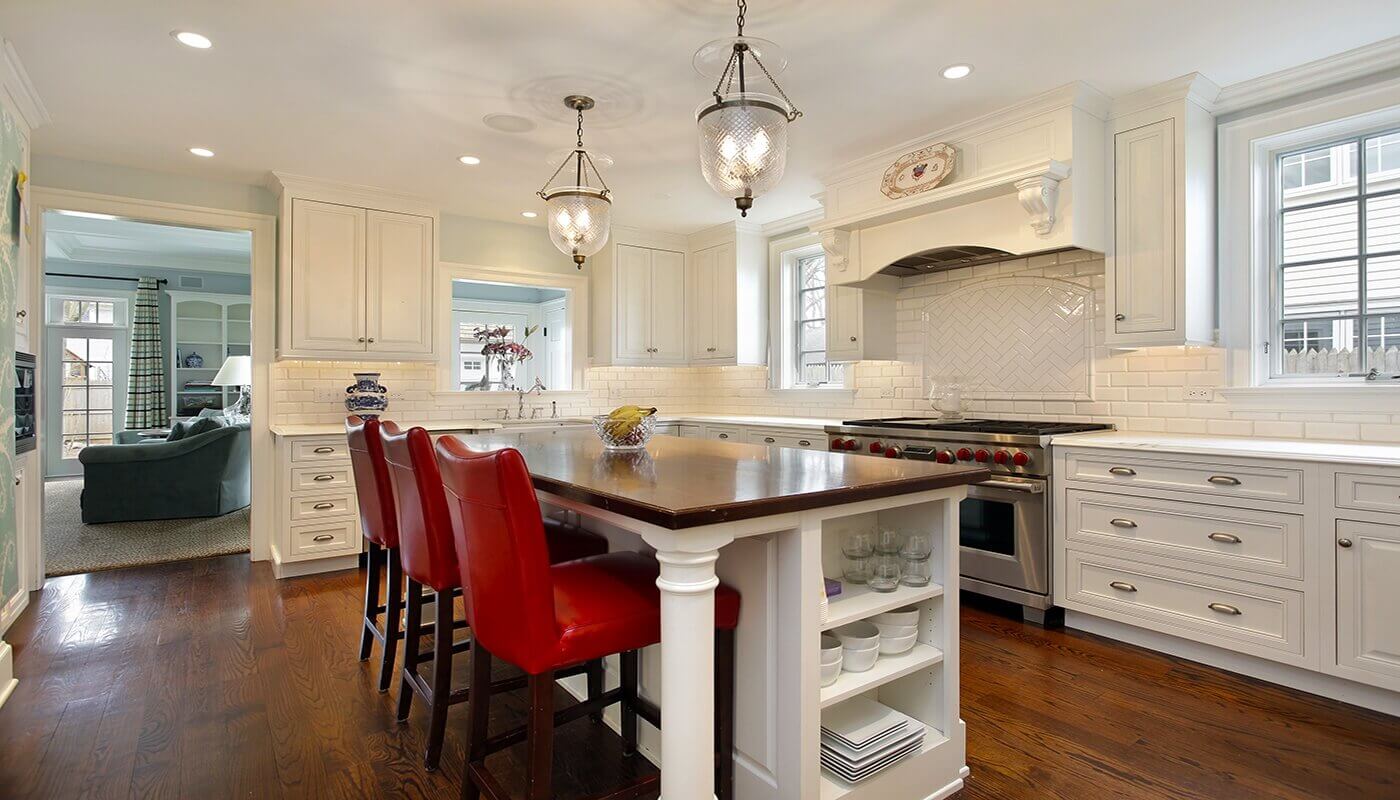
The Dos and Don’ts of Kitchen Remodeling
At M&K Renovations, our clients often come in with designs created by independent designers or other design companies from the Greater Philadelphia area. While there are some good designers out there, others come up with plans that may be unique, unusual, or aesthetically pleasing but not entirely functional – and sometimes not up to code.
That’s why we have our own designer to work with our customers and collaborate with our building experts. They design kitchens that fulfill all our clients’ dreams while providing the utmost functionality, beauty, and safety.
Whether you’re creating your own design, using another designer, or coming to us with some plans in mind about your ideal kitchen, keep some of these “Dos and Don’ts” in mind.
Kitchen Design “Dos”
Create a work triangle when rearranging your kitchen layout: This is Kitchen Design 101. If you are redesigning the layout of your kitchen, creating an efficient flow is critical to functionality. If you don’t get this right, your kitchen will drive you nuts for years. Look at your floor plan and draw a line from your fridge to your sink to the stovetop and back to the fridge. You should have drawn some sort of a triangle. If your appliances aren’t in a triangle formation, you may want to reconsider the positioning of your appliances to create a better flow.
Put ceiling lights along countertops: There are specific guidelines for lighting in kitchens. You want to make sure your workspace is well lit, so when you’re installing new recessed lights, position several lights along the countertop edge and space them about four feet apart.
Add as much light as possible: Can you tell that lighting is a big deal in the kitchen? Along with all your recessed lights, we always suggest finding ways to incorporate more natural light, even adding a window when possible. You also want to think about mood lighting. When the sun sets, you want to be able to dim the lights and have a more ambient feel. Incorporate pendant lights or accent lighting where it makes sense – above the island, above the sink, under the upper cabinets, and wherever else you’ll work, sit, or eat.
Get a pull-out wastebasket cabinet: This is the space-saving individual’s dream! If you’re working with your existing kitchen cabinets, you can install a sliding track in a lower cabinet to create a pull-out trash can. However, if you’re designing your kitchen from scratch, we highly recommend you install a pull-out cabinet specifically designed for your trash can.
Kitchen Design “Don’ts”
Don’t position your fridge too close to a side wall: This is a frequent mistake that designers and homeowners make. Even if a designer leaves a few inches between the fridge and the wall, that’s just not enough to accommodate floor molding and the fridge door that swings out, making it impossible to open the door completely. We recommend not putting refrigerators near a wall so that the appliance’s doors can open all the way. This also goes for cabinets or other obstructions. You want to ensure the free movement of refrigerator doors and cabinet doors.
Don’t place your oven directly next to the wall or another appliance: As with the refrigerator, you do not want your oven to be crammed against something, not just for ease of use but for safety, as well. There should not be a wall right next to a hot appliance. We suggest placing at least one lower cabinet on either side of the oven with counter space on top to allow for enough workspace on each side.
Don’t position your recessed lights too far away from the edge of your countertops: We are adamant about the positioning of recessed lights when we build kitchens. Lighting in a kitchen is crucial, for both safety and functionality. To figure out where your lights need to be, stand at your countertop as if you were preparing food and look straight up – the light should be directly above you. If it’s behind your head, you will cast your own shadow onto your countertop, making it difficult to see.
Don’t put your wastebasket too far away from the sink: Do what you can to keep your trash can and your sink as close to each other as possible. We recommend placing it either below your sink or directly next to your sink in a lower cabinet.
Don’t get a stainless-steel sink: This may be a matter of personal preference, but we find that the only time it looks clean is the 30 seconds after you wipe it down. It constantly shows water spots, and if you have hard water, you will be battling hard water spots until you give up and buy a new, non-stainless-steel sink.
We hope these suggestions help you as you plan your kitchen remodeling. Bring your ideas and plans to us and we will help you finish your design for maximum, beauty, safety, functionality, and satisfaction.
PROFESSIONAL HOME REMODELING & RENOVATIONS
Renovating the Philadelphia Area for Over 16 years

Jeff’s experience in Operations Management and Organizational Leadership in the mortgage, manufacturing, and finance industries allows him to bring 15+ years of corporate expertise to the M&K team. His motto is: “Quality is paramount – Process should be simple.
